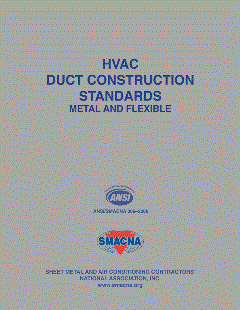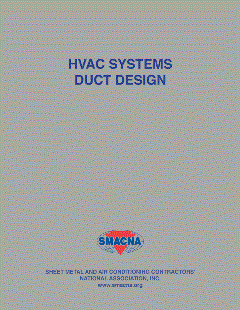Textile HVAC duct can be manufactured to deliver airflow performance equal to its metal duct counterpart, but with better results.
Fabric duct is typically used in long aesthetic runs with few offsetting variances. However, few engineers and contractors are aware that elbows, Ts, Ys, reducers and any unconventional radius or angle needed for a project can be custom-manufactured in textile equally as efficient and cost-effective as metal. Literally, nearly anything that can be made of round metal duct can be made in fabric duct.
For example, the new $133 million, 275,000-square-foot Irving Convention Center in Irving, Texas, incorporates fabric ductwork with more fittings, offsets and other variances than most other facilities in the U.S. The exposition area features more than 1,200 linear feet of permeated textile duct with high-throw orifices to reach the floor area 50 feet below.
It was a challenging design-build project for the mechanical contractor Dynaten of Fort Worth, Texas, and project manager Chuck Gamble. Utility piping, electrical and structural steel presented myriad obstructions to circumvent. However Dynaten didn’t hesitate specifying with textile duct fitting diameters of 22, 40, 44, 64 and 76 inches. Further challenges arose when Dynaten had to go back to the CAD 3-D drawing board several times as the project made several building structural changes during construction. Thus, the project totaled more than 24 elbows of different diameters, 14 offsets and a myriad of textile-to-textile adaptors to reroute ductwork while minimizing static pressure increases.
Incidentally, friction loss in textile is considerably less at 0.01 versus metal’s 0.1 water gain per 100 feet. In many projects, this allows the use of smaller fan motor horsepower in equipment specifications, which in turn potentially reduces operational costs and expensive sizes. However, when a project’s original metal duct specification is converted to fabric duct for reasons such as value engineering, equipment size doesn’t normally change. Equipment downsizing is only possible when textile duct is specified from the beginning stages of design. That’s why engineers should always consult with a textile duct manufacturer from a project’s beginning design stages.
The ICC fitting radiuses went well beyond standard 90 and 45 degrees. To avoid structural components, some elbows required 5-degree, 15-degree, 43-degree and some other unconventional angles.
Like metal duct, fabric duct starts off as a flat pattern and is available in a five-gore elbow design instead of a mitered elbow, the latter which induces more static pressure resulting in a reduced efficiency. Not all fabric duct manufacturers offer a five-gore elbow.
From Dynaten’s design, the desired textile porosity and vents were chosen after assuring the airflow would be sufficient for the application. Factory engineers oversee the design process, however the project mechanical engineer chooses diameters as a starting point and OKs parameters such as inlet velocities, vent placement, total cubic feet per minute of the run, number of vents, duct sizes and other specifications.
At ICC, the textile duct was designed for high throws of about 50 feet. The high throws required hard rubber grommets in 2- and 3-inch diameters with varied spacing depending on each specific area’s airflow requirements, which resulted in dozens of orifices per run. Some engineers are skeptical about high-throw textile duct versus conventional metal duct/register systems, but fabric has an equal ability to throw up to 150 feet with adequate static pressures.
Furthermore, the tightly spaced orifices offer a more evenly distributed airflow than metal registers every 10 to 20 feet.
The factory’s CAD system digitally directs the cutting process of the material to precise dimensions. It is then sewn together along with any specified accessories such as cable suspension attachments or zippers to adjoin sections.
Textile fittings can emulate nearly any metal fitting configuration. The greatest difference between metal and textile manufacturers is the former welds and the latter sews using manually-operated industrial sewing equipment. Each textile duct component and fitting is bagged separately with identifying numbers and diagrams that describe its exact position in the overall air-distribution network. Due to the project’s complexity, Gamble first laid out the ICC version on Dynaten’s warehouse floor before installation.
While textile and metal manufacturers have equal design capabilities, textile duct offers many more advantages. For example, installation labor costs are typically 20 percent to 60 percent less than spiral metal duct in most projects. At the ICC for example, hanging the 76-inch-diameter trunk lines required about the same amount of installation time as the project’s 22-inch branches. That advantage would definitely not hold true for hanging similar sizes of metal. Thus, the hours required to install the ICC’s textile duct was estimated as 50 percent less than metal, resulting in tens of thousands of dollars in savings for Texas taxpayers.
Each 22-, 40- and 44-inch-diameter duct run at the ICC is suspended by only two wall anchors that support a horizontal suspension cable. Metal duct, which is 90 percent heavier than textile duct, would have required hundreds of ceiling anchors and vertical threaded rod ties.
The larger 64- and 76-inch-diameter textile duct sizes required triple horizontal suspension cables per run. Metal ductwork would have required dozens more ceiling anchors for vertical supports.
The lightness of textile duct also promotes ease of installation and particularly increases job safety. Hanging a limp, 76-inch-diameter textile elbow onto a suspension cable is comparable to threading a shower curtain through a rod. Conversely, hanging a metal elbow requires considerably more manpower, heavier equipment and rigging maneuverability.
Another advantage is the ICC textile ductwork minimizes condensation, which is a potential problem in Dallas’ hot and humid summers. The fabric duct has a built-in anti-microbial agent to prevent biological growths from harboring inside the duct runs and fittings. Conversely, single-wall metal typically collects condensation that drops on occupants below. Insulated duct minimizes condensation on the exterior surfaces but is more costly. The insulation is also likely to collect dust, mold, mildew and other contaminants.
Insulation in metal duct is also designed to reduce heat gain.
Phil Sloan is the inside sales manager/engineer at DuctSox Corp. in Peosta, Iowa, he oversees all textile HVAC duct projects from design through production. Sloan holds a bachelor of science degree in engineering from Loras College in Dubuque, Iowa.









